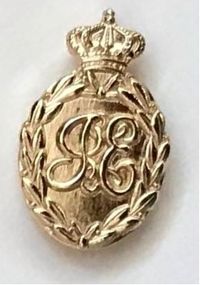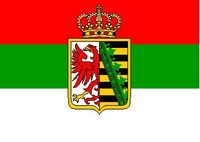Die Sagenwelt auf amerikanisch
From the zoological gardens, you can reach the city by taking the linkage, albeit first via the state mill. The waters create a powerful build up before the weir. A part surges forward to the mill with restrained force; the rest plunges, foaming and roaring, down into the river bed. Close to the pleasure garden, the people of Anhalt have erected a handsome equestrian statue depicting Duke Frederick I welcoming the Infantry Regiment of Anhalt, as the prince and heir to the throne, near Veaumont, before going into battle. The conversion is decorated with a frieze. Two female figures are handing out fruits from the left and right. Related figures approach from both sides to take or bring gifts: on the left, a widow, an orphan, a cripple, the church, the school and the arts, and on the right, horticulture and agriculture, forestry and hunting, mining, shipbuilding, and mechanical engineering. The pleasure garden adjoins the castle directly. The oldest part of this construction is the W-wing, at the entrances to which two Mägdesprung cast-iron bears stand watch. In order to gain a stairway for the central section, the magnificent porch was built, whose gable is crowned with the gilded statue of a praying boy. Somewhat lower down, a gold-plated ring hangs in a niche - the replica of the Toad Ring, which is carefully preserved inside the castle. According to the Legend of the Toad Ring, the facts of the matter are these:
The legend of the Toad Ring (formerly the city castle)
In ancient times, a benevolent princess lived in Dessau. She carried out good deeds with a more than a generous hand and had compassion for the lowest of animals. One day, she undertook a walk to the dell = wetlands. There she came across a toad, which was half-starved and close to death. Gently, she leaned down to the toad and scattered a few breadcrumbs. The toad soon recovered. The princess, however, returned to the castle. - In the night, a maiden suddenly appeared at her bedside and implored the princess to follow her and carry out a deed of mercy. The princess rose and followed the maid through the dark and stormy night. The path went through the woods and the meadow to a small fisherman’s cottage. Here the fisherman's wife lay on a “bed of thorns” without any help. The princess stood by her lovingly. When the danger was over, she was led back to the castle by the maiden. "Thank you!" said the maiden to the Princess, "You have saved me from severe torment. I am the ancestress of the Prince of Anhalt. When the light of Christianity first invaded our regions, I opposed it. As punishment, I was transformed (converted) into different guises on earth, until a princess handed me bread and, at my request, did a work of mercy. Both have been done by you. In gratitude, I give you this ring. Guard it well! As long as it is in the safekeeping of the princely house, his clan will not die out."
The Water Nymphs’ Swamp Near Grosskühnau
Großkühnau is close to a pond, the Water Nymphs’ Swamp. The following legend is told about it:
A shepherd had heard a lot about the water nymphs and wished to meet them. One day, he was making his camp in the shade of a tree at the Water Nymphs’ Swamp, when the waters moved and a male nymph emerged. The shepherd quickly reached for his staff and struck out wildly at the merman, derided and mocked him until the male nymph disappeared and went, cursing, back into the deep waters again. In this way, the shepherd had provoked the wrath of the entire water nymph population. As soon as he took a sip of water, he felt nausea and pain, and his angry pursuers followed him no matter where he went. The shepherd left Kühnau and finally took up an engagement in a remote village. For years, nothing happened to him and he assumed that everything had been forgotten - he hardly thought about the incident with the water nymphs anymore. Then one Sunday, he took a walk into Kühnau. On his return journey, one of his relatives accompanied him part of the way. But soon, both had to seek protection from a violent thunderstorm in the forest. When the storm was over, the shepherd felt a raging thirst. In vain, they looked around for a spring or stream. The panting shepherd caught sight of some clear water in a hole which the hoof of a horse had made in the earth. He immediately threw himself down. He had hardly touched the water to cool his hot lips when a terrible din came about. He felt as though he was being held by a strong hand and was unable to lift up his head. His companion was startled and rushed to the village in order to return to the place of horror with more people. The shepherd was found dead on the floor. There were no traces of violence to be seen. The small puddle was as still as a clear mirror.
Count Waldersee
At one time, Castle Waldeser, today known as Castle Waldersee, was situated on the S-bend where the river Pelze flows into the Mulde. The water courses protected it from enemy attacks, but the same high water also brought about its downfall. Some of the ramparts can still be seen where it was situated. A folk legend has survived better than the castle itself:
*
Count Waldersee’s beautiful daughter was celebrating her joyous wedding with the glorious knight Sir Udo von Wildeberg. Amongst the invited guests were the knights von Wallwitz, von Reina, von Gottenberg, and Sieglitz von Leuner. After the tournaments, the ladies and gentlemen sat down to eat. Joyous cheering sounds resounded in the vast spaces of the castle. Then the warden of the tower blew his trumpet and announced that the enemy was standing before the gates. The knights immediately seized their swords and armor and rushed outside. The wild Count Kühnau was approaching with hostile intent and wanted to storm the fortress with an attack. In no time at all, he had penetrated into the courtyard with his band of men, since the servants were more interested in celebrating the wedding of their mistress than guarding the castle. Impetuously, the chivalrous knights pounced upon the enemy and managed to drive it out of the fortress. Count Kühnau fled into the forest with his band of men, followed by Sir Udo and his comrades. Many of the robbers were caught and slain. However, in the pursuit, the brave warriors became lost in the forest, and could only return after the break of day. Their joyous victory was soon to become bitter pain. As they approached Castle Waldersee, they saw with horror that it was in flames. Count Kühnau, who had kept himself hidden in the thicket with a few of his accomplices, had entered the castle, which had been stripped of its men, set it on fire and stabbed the aged Waldersee and his radiant daughter, so that those returning found nothing but rubble and corpses. Although it was possible for Knight Wildeberg to find the evil-doers, catch them in the forest and hang them, his dear wife and her father were no more. The mourned one often approached her abandoned husband as a body of light and consoled him with the thought that one day he would be united with her forever. She also appeared to the residents of the neighborhood for a long time afterwards as the wandering maiden of Waldersee.
Bitte besuchen Sie diese Seite bald wieder. Vielen Dank für ihr Interesse!




